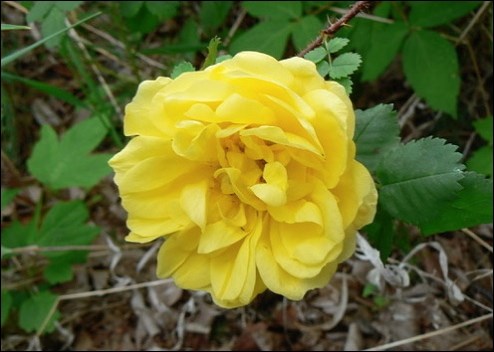Looking for a new tree or shrub for your garden? Why not consider planting a made-in-Saskatchewan cultivar to help celebrate #Canada150? Walk down any street or back lane in Saskatchewan and you'll likely come across a Kerr apple, a Patterson lily, a Thunderchild crabapple or a Spring Snow flowering crabapple. These were developed by some of Saskatchewan’s early horticultural pioneers. Many of their plants are now found well beyond our provincial borders and still available for sale, competing strongly against newer cultivars.
The first head of the University of Saskatchewan's Horticultural Department, Cecil Patterson, was a quiet man, absolutely dedicated to plants, who worked largely alone. Born in Watford, Ont., he grew up on a dairy farm, where hard work was a part of his daily life. He took his first degree at the Ontario Agricultural College and his MSc and PhD at the University of Illinois.
His interest in lilies may have first been tweaked when his car broke down in Prince Albert National Park in the 1930s and he saw a host of native woodland lilies in bloom. By 1950, he had made horticultural history as the first plant breeder to develop hardy lilies in shades of pink and white by making crosses with Lilium cernuum and other Asiatic species. Among his selections, Edith Cecilia, White Princess, Jasper and Apricot Glow are still considered of value today. He's also known for his Patterson Pride plum, and Thomas and John pears.
* John (P. ussuriensis x Aspa) (University of Saskatchewan, 1960) pear is strongly upright with a pyramidal shape that is considered more ornamental than that of many other pears. The fruit is the largest of the Apostle series. It ripens in late September with flesh of good quality. This is the most widely planted of the Apostle series.
* Patterson Pride plum is semi-dwarf with weeping branches. The fruit (4.5 centimetres), ripe in mid-September, has bright red tender skin with bright gold, firm, sweet, juicy and freestone flesh. It is excellent for fresh eating and very good for freezing and jam.
Percy Wright did not attend school until the age of 14, yet he won the gold medal when he graduated from the University of Saskatchewan with great distinction (with an English degree). He came from Quebec with his family to homestead near Tramping Lake in 1907 when he was nine years old. He was a school teacher, operated several nurseries in rural Saskatchewan and later moved to Saskatoon where he was a reporter for the StarPhoenix. With no formal horticultural education, his most enduring contributions to our landscape are the Thunderchild' rosybloom flowering crabapple and the 'Hazeldean' rose.
* Thunderchild (open-pollinated seedling of Les Kerrs Sutherland ) with purple-red foliage, bright pink flowers, good form, resistance to fireblight, and a height of 4-4.5 metres. It was selected by the Saskatchewan Nursery Trades Association to mark the 75th anniversary of our province.
* Hazeldean (1948) (R. spinosissima var. altaica x Harison s Yellow ) with semi-double yellow flowers, has better form and scent than Harrison’s Yellow, is resistant to the fungal disease blackspot, doesn’t fade in strong sunlight and has black hips. It’s drought-tolerant once established. Flowering in June and two to three metres in height, it s a real show stopper in full bloom.
Sara is the author of numerous gardening books, among them the revised Creating the Prairie Xeriscape. And with Hugh Skinner: Gardening Naturally; Trees and Shrubs for the Prairies, and Groundcovers & Vines for the Prairies. Expect Fruit for Northern Gardens with Bob Bors in November, 2017.
— This column is provided courtesy of the Saskatchewan Perennial Society (SPS; www.saskperennial.ca; hortscene@yahoo.com; www.facebook.com/saskperennial). Check out our Bulletin Board or Calendar for upcoming garden information sessions, workshops, tours and other events. Consider taking a gardening class at the University of Saskatchewan (http://gardening.usask.ca) - lots to choose from during April and May.



